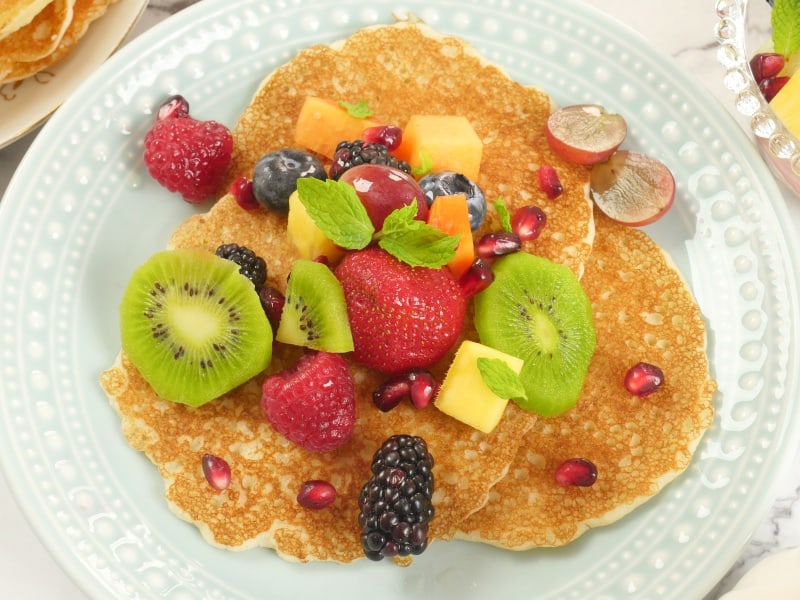
Oh, so tender
Goan rice pancakes are part of a whole world of crepes, dosas, and pancakes made with rice. They are rich, spongy, and oh so tender. Eat them on their own as a satisfying breakfast served with some fresh fruit or fried eggs. Or serve them for a snack anytime, and they make a stand-in for flatbreads to eat with curry. A similar rice-based “pancake” is the appam made from dosa batter. There is the kailoreo described as a Goan dosa that uses a very similar ingredient list. And there are many other rice-based pancakes, both in India and in other Southeast Asian corners of the world. Think Indonesia’s kue serabi, the Malaysian net crepes (roti gala), and the Thai kana krok.
Chittap, chitiaps, chitaps or polle!
This rice pancake recipe is modeled after the Goan chittap (chitiaps, chitaps or polle) made with rice flour, some wheat flour, coconut milk, a bit of leavening, and an egg. I’ve taken a page from the blog East Indian Recipes, which makes chittaps with some added wheat flour to provide some structure and body. Traditionally these pancakes are made with freshly grated coconut, local rice that has been soaked overnight and leavened with toddy, a local palm wine. This is a streamlined recipe to make rice pancakes an easy and quick cooking process.
Keep in mind is that while the rice pancakes come together in about 10 minutes, the batter needs to sit on the counter to ferment for at least 2 hours. If you want them to be tangier, you can mix the batter up at the end of the day and then make them for breakfast the next morning. Or switch to a morning preparation for a perfect evening curry meal accompaniment.
Leavening and gluten-free options
I’ve seen these pancakes leavened with yeast, baking soda, and toddy (a coconut vinegar). If you can get your hands on toddy, that is what I would use, but I don't think you can find that vinegar in the U.S. My baking soda trials were not a great success. While the final result was certainly edible, these rice pancakes did not have the yeast-made ones' light, airy texture.
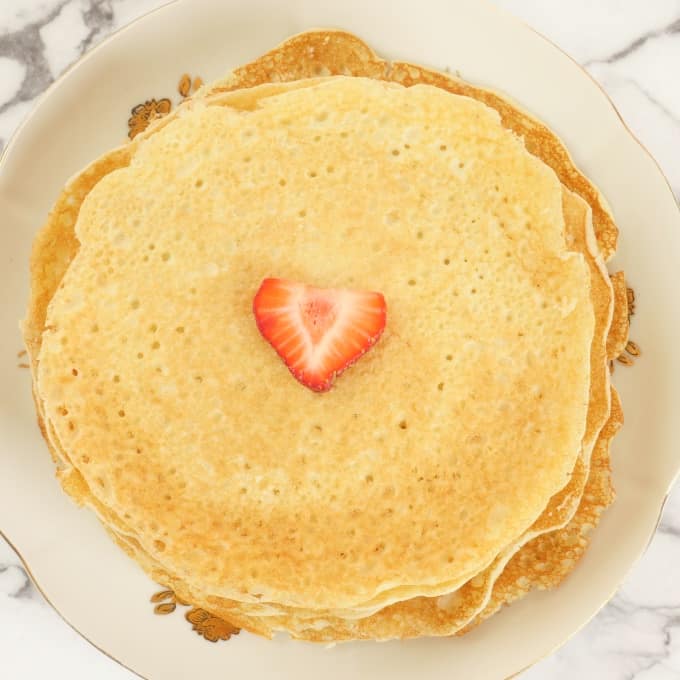
If you prefer to go gluten-free, instead of the all-purpose flour, use your favorite gluten-free flour or even a mix of flours. I have played with a combination of buckwheat, Bob’s Red Mill Gluten-Free 1 for 1 flour, and some spelt, which came out beautifully. Chittaps are endlessly customizable and a nice change from your usual breakfast pancakes. This batter is supposed to be quite thin and pourable so that you can swirl it into an even thinner circle. You could also make a thicker pancake similar to the American version if you prefer. The light batter cooks up into a tender, spongy pancake. Simply don't use all the water called for in the recipe.
Change up your pancake routine
I encourage you to experiment with the thickness of the pancake, the flours you use, and how you serve them. Give your family and friends a delightful new pancake or flatbread routine and I’d love to hear about how it goes for you.
Happy cooking!
~ Alonna
See the Notes below before you cook.
Recipe Card 📖
Rice Pancakes (Indian-style)
Ingrediants
- 1 cup coconut milk
- 2 teaspoons sugar
- 1 teaspoon active dry yeast ~ Or instant yeast, see Notes below
- 1 large egg
- 1 cup white rice flour
- 1/2 cup all-purpose flour ~ See Notes below
- 1/2 teaspoon sea or table salt ~ Or 1 teaspoon Diamond Crystal Kosher salt
- 1/3 to 1/2 cup water
- 2 tablespoons ghee ~ Or oil for cooking
Instructions
- Gather your ingredients.
- In a small bowl warm the coconut milk to 110°F (43°C). If you don't have a thermometer this should feel warmer than body temperature, but not hot. Stir the sugar and yeast and allow the yeast to bloom for 5 minutes until foamy. Mix in the egg.
- While the yeast is working, in a medium-large bowl, measure in the flours and salt. Pour in the yeast mixture and combine well. Begin adding the water starting with 1/4 cup. You are looking for a batter thinner than pancake batter, but it should not be watery.
- Cover the bowl and leave it on the counter for 2 to 8 hours. The longer it sits the tangier it will be. Add more water or coconut milk if your batter is too thick to be pourable.
- Heat a frying pan over medium-high heat. Add a teaspoon of ghee or oil, and wipe the excess off with a paper towel. When the pan is hot, turn down to slightly higher than medium. For larger crepe-sized pancakes ladle in a 1/2 cup of batter into the pan and immediately swirl the pan to spread out the batter into a larger thin circle. Cook for 2 minutes or until golden brown, then turn over for 30 seconds and then remove. Continue with the rest of the batter.
- If you don't want to cook all of the batter, keep it covered in the refrigerator for a day or two. Rice pancakes can be made ahead and stored in a stack in the refrigerator. Microwave for a minute or two so you can carefully pry them apart. Alternatively, allow them to come to room temperature. Serve as a snack with chutney, honey, as breakfast with fruit, or with dinner to eat with curries.
Notes
- Use dried coconut instead of coconut milk: To make coconut milk go to my coconut facts post.
- Flours to use: If you want to make a gluten-free pancake, feel free to use your favorite gluten-free flour, buckwheat flour, or a mixture of flours.
- Yeast vs. baking soda: I make rice pancakes with baking soda because some cooks use this leavening option. Compared with yeast, the batter wasn't near as light and bubbly. The pancakes were still good but I prefer using yeast.

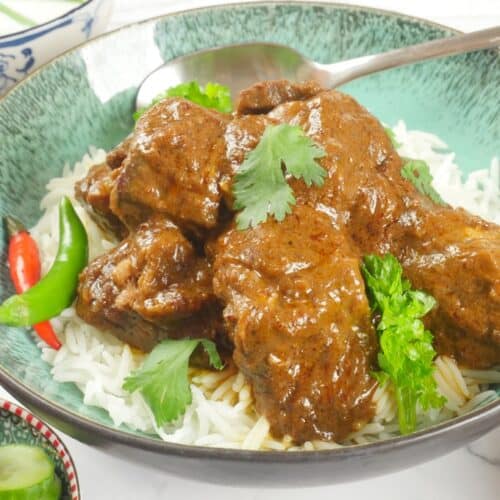
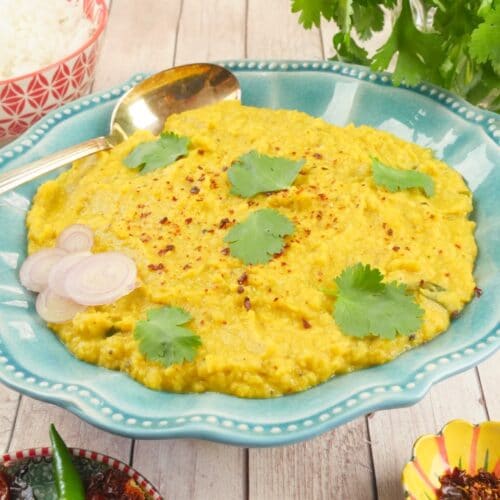
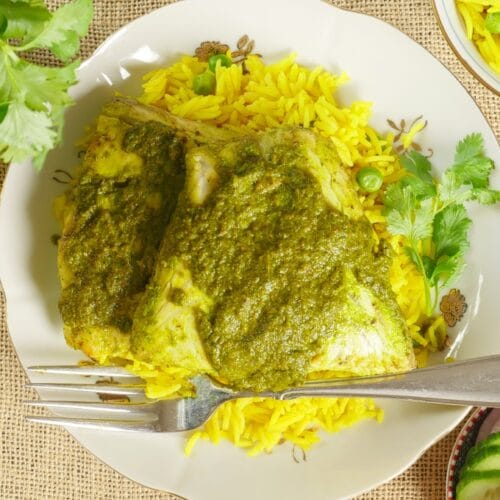
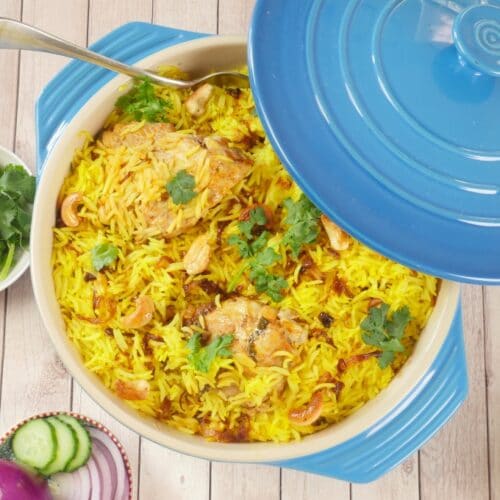
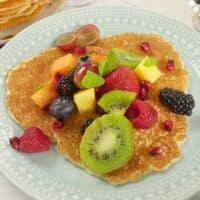
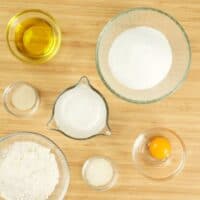
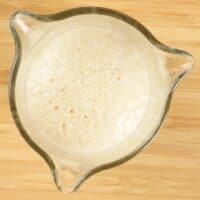
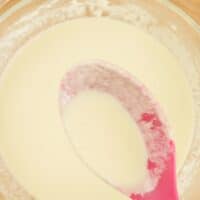
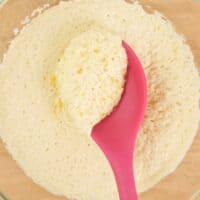
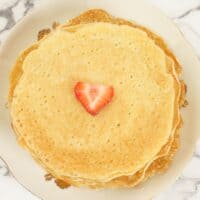
Leave a Reply